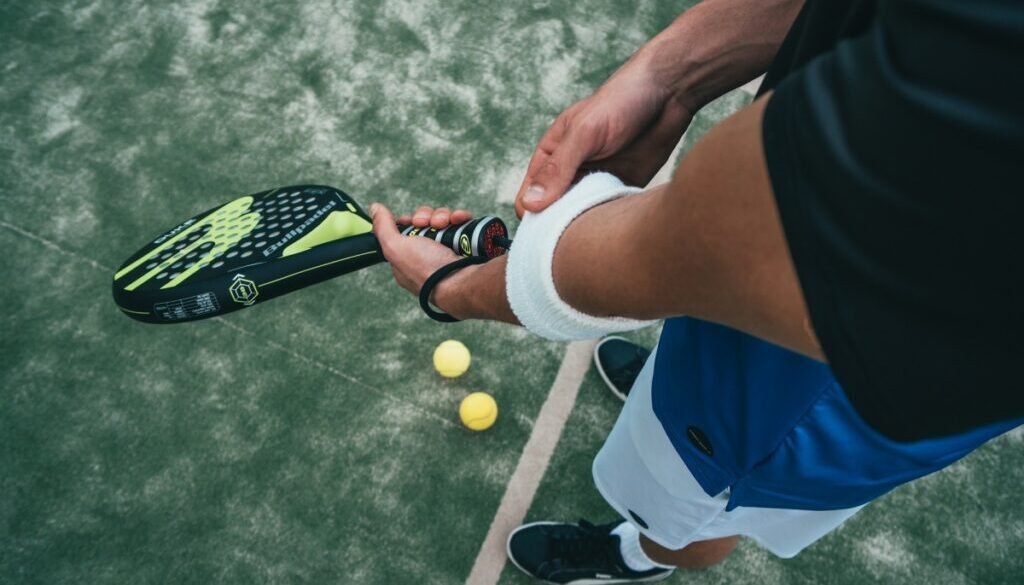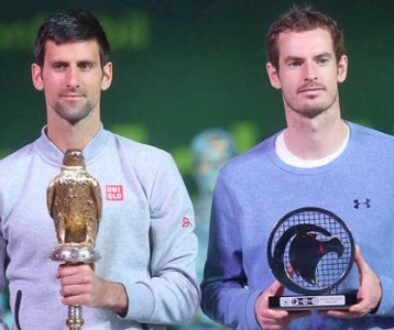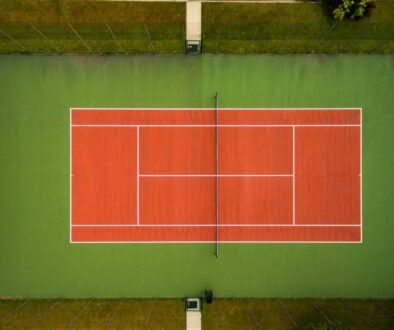Split step – it is all about the timing
Looking at the tennis match, we can easily notice which areas of the performance are most apparent. Powerful strokes, quick movement, or balanced position are the factors that top players possess at the highest level, but these are not the only skills that decide about their ability to play effectively against the more advanced opponents. The whole process starts with a little jump, which is a split step.
Split step is an action that players learn during the first lesson on the court. Coaches make the athletes aware that the process of hitting the ball starts with a split step, so this ability has to be executed habitually to prepare an effective shot, especially during the intense rally. Players who have to remind themselves about making the little jump are usually unable to focus on tactical decisions that are crucial to dominate the rival during the point.
There is no doubt that the higher the level, the more important the split step is. Of course, at a beginner or intermediate level, the players cannot omit this crucial aspect. The main goal while executing a split step before every shot is allowing our body to produce the fastest possible reaction. As we know, the opponent does not give us too much time to prepare, so being late at the beginning can have disastrous effects on the final result of the stroke. A good split step is necessary to apply the individual techniques most efficiently and execute a tactical plan based on your strengths and the opponent’s weaknesses.
The typical player knows that a split step should be made when the opponent hits the ball. That statement is not entirely true, which is the reason for many mistakes in this really simple physical action. Additionally, the players falsely believe that they should land with both feet on the ground simultaneously, which is another reason why they do not move to the ball in the fastest way possible. If we add one more aspect, which is landing with feet quite close to each other, we have a total recipe for being slow in reaction and unable to prepare the shots effectively.
If we want to improve the quality of playing points, we have to start with the right approach to a split step. The action performed by the professionals in the field always displays the areas that should be addressed to all players’ training sessions. The right moment to start a little jump is right before the opponent hits the ball. It means that when the opponent is hitting the ball, the player should already reach the peak of the jump. This timing is necessary to be able to read the direction of the opponent’s shot and land on the court first with the opposite leg to the direction the player wants to move. This landing allows for turning into the direction we want to move and immediately start the movement after one leg touches the ground. It proves that a split step is not related only to the plyometric action, but it also forces the player to develop a good perception to assess when to start the whole action. Either we are late or too early with the jump, we cannot have a quick reaction that is necessary while responding to the surprising shots from the rival. Of course, landing with a wider base will also positively impact the first steps to the ball, so taking care of these aspects should be a priority for the players at all levels who think about the serious competition.
Split-step is performed before all the shots except the serve. Before forehand, backhand, or volley, the players should incorporate a small jump to increase the chances for a good execution and a lead in the score. However, it is quite difficult to assess when the timing is appropriate, so the players should record themselves and pay attention to the time of the jump and the specific technique of landing on the court. This is the base that athletes have to start with, keeping in mind that other physical abilities are also important to build the final of the split step. If the players have a problem with balance on one leg or cannot land on the front part of the foot, they cannot be able to be quick with the first steps, even while jumping at the right time.
Learning from the top players is a great way to get information that can be used during the individual practice sessions. The professional players perform excellently, because they repeat the simple actions until they reach the highest possible level of this ability. It is not about learning the most complex skills at once – the recipe to succeed in tennis is to gradually improve various areas of a given stroke. If we focus on quality repetitions during every training session, we can be sure that the split step becomes a habit that we execute unconsciously.




